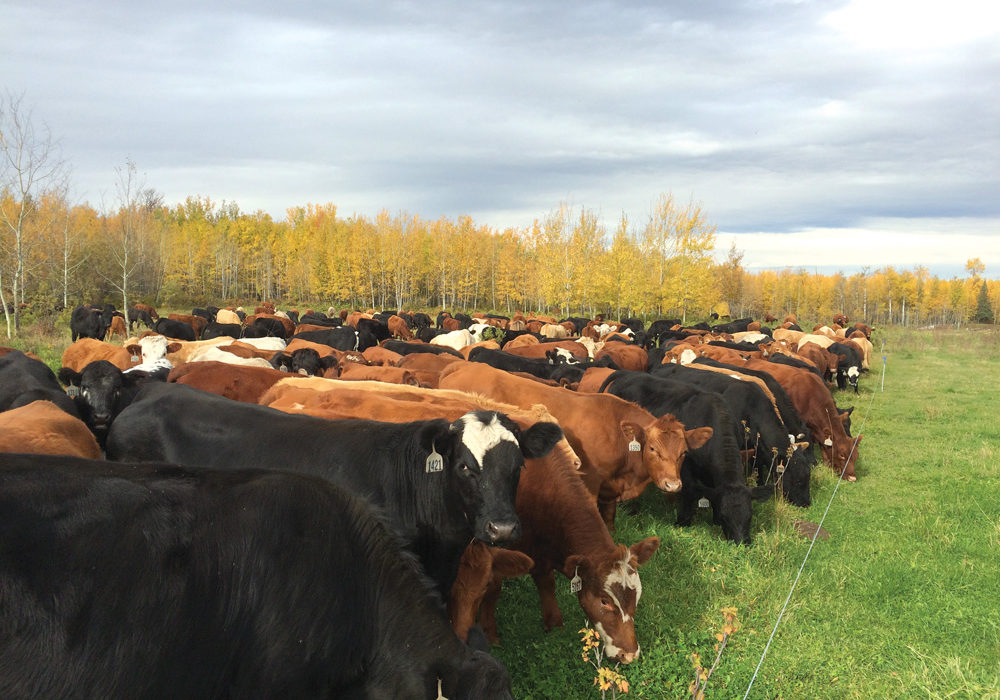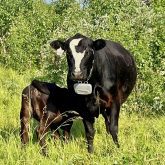For years, I referred to the type of grazing that I do as intensive cell grazing. I am not sure where I first heard the term or why I used it but that’s what I use to call it. I have also called it sustainable grazing or more recently, regenerative grazing. But the truth is that my grazing is still the same no matter what I call it. Simply put, the goal is to build soil, repair the water cycle and encourage biodiversity, which in turn should produce more profit. We use animals to manage plants and the plants build soil. The point I want to make this month is about the first word, “intensive.” The intensity of grazing refers to the stock density of the livestock. The question I receive quite often is: How intensely should we graze?
Read Also

Body condition, nutrition and vaccination for brood cows
One of the remarkable events of the past century related to ranching has been the genetic evolution of brood cows….
Stock density is the number of animal units on a piece of land for a specific point in time (e.g. 100 steers on 10 acres for one day). This is not to be confused with a stocking rate, which is the number of animals you have on a pasture for the whole season (e.g. 100 steers on 160 acres all summer). I measure stock density in animal days per acre (ADA), but there are other ways of measuring it as well. Some use stock days per acre, some use pounds per acre. Basically, stock density is how closely together the animals graze as a herd. Are they spread out across a large piece of land or are they bunched together in a tight group?
Very high stock density grazing has been called mob grazing as well, if you are familiar with that term. In nature, before we started managing grazing herds, the fear of predators would cause the grazing herds to bunch together for protection. They would have a high stock density just because of fear, but this was a good thing.
There are two reasons that the higher the stock density, the better it is for the land. First, the higher the stock density, the better the manure distribution. In a continuous grazing operation, a lot of the manure and urine ends up in lounging areas such as in the trees or by the water trough. We are transferring the nutrients from the land to small concentrated areas. This is not a good thing. As we increase our stock density, the manure distribution improves. We are spreading the fertility more evenly across the land.
The second benefit to a higher stock density is improved plant utilization. If you have good plant utilization, every plant has been bitten, stepped on or knocked over. Every plant is set back. This allows for an even playing field for every plant when it comes time to re-grow. Picture a haybine going across the field and cutting every plant. No one type of plant has an advantage. With continuous grazing, all of the most desirable plants get grazed and regrazed, while the less desirable plants get to go to seed. Which plants do you think will persist in the stand?
Stock density is a very important concept in grazing management. However, I would like to add in one more component: economics.
When I look at how intensely I plan to graze, I need to factor in economics. Your situation may be different but in my area, extremely high stock densities can also cause extremely high labour and equipment costs.
First, let’s define the two extremes of stock density. Continuous grazing has very low stock densities, will have low labour costs associated with it but will also have a negative effect on your land. Mob grazing on the other end has very high stock densities, will have high labour costs and will have a positive impact on the land. It depends on management and there is a whole spectrum of stock densities in between.
I just said, the higher the better, right? But wait, the darn economics need to be factored in. In my environment, decent help comes with a price tag of about $20/hr. I manage over 3,000 acres of pasture land with about 1,200 head of cattle each year in four to six different groups. Moving cattle eight to 10 times a day with mob grazing would pretty much use a full unit of labour. A full-time employee would cost me about $15,000 just in wages for four months. That does not account for the equipment costs yet.
Will this land improvement pay for the labour? It comes down to a few factors. The size of the herd will have a large impact on the economics. Your labour value will divide out better with more animals in one herd. It takes almost the same amount of travel and labour to move 30 cattle as it does to move 300 cattle. Another factor is distance. Your costs will vary quite a bit depending on if you walk out your back door to move fence or if you have to drive 30 miles to get to your pasture. Don’t forget we still have to account for the costs associated with the equipment you are driving. Labour and equipment costs are one of the bigger costs associated with the grazing profit center. Many times it is even higher than the land cost. The time and travel of the everyday management can really add up. I won’t even get into the fencing costs, water system costs, spring set up costs and land costs today. Let’s just keep it simple. My wife says calculations in an article are boring, so we will just stick to concepts. You do the math.
So back to the question at hand, how intensely should you graze? My political answer? It depends. There is an economic threshold on every pasture. It is a balance between the benefit to the land and the costs to get it. I calculate a gross margin ratio for every pasture I graze. This will show me all the costs associated with that pasture and can show me the economic tipping point where my costs will be too high. A pasture farther away with fewer livestock, I will graze less intensely. I might only want to travel down to it every three days or so. A closer pasture with less travel time and more animals will pay better and will allow me to graze more intensely. Maybe I can move cattle a couple of times a day with this pasture. My goal would be to graze each pasture as intensely as possible while still maintaining a good margin. The land improvement will be faster the more intense I get, but I have to be able to cash flow it as well.
What does this mean in the real world? At Greener Pastures Ranching, in our environment, with our situation, on average, I move cattle between multiple paddocks every day or two in the spring and maybe every three to five days in the summer. Of course, I am still managing so that both the graze period is short enough and the rest period is long enough to prevent overgrazing. The intensity is a little different on each cell and is adjusted each year, depending on the many factors explained above.
Grazing is more of an art, with science behind it. I cannot give you a recipe. In some situations, I will mob graze if I want to stimulate a certain area to kick start it or to manage a symptom, but not every paddock all summer long. If my labour cost were a lot lower, like in some countries, I would mob graze everything all the time.
Economics can be different in different environments. It is important to include the economics into your decisions. Your farm is different than mine. My question to you is: How intense should you be grazing?

















